|
Henry, Count of Nassau (Dutch: Hendrik van Nassau-Siegen, German: Heinrich III. von Nassau) (before 1288 – July/August 1343)Count of Nassau-Siegen, of Grimborg, Heiger, Westerwald, later of Molsberg, and after his brother's death of Dillenburg. He was a son of Count Otto I of Nassau and Agnes of Leiningen
Adelheid of Heinsberg, daughter of Dirk of Heinsberg and Blankenberg and Johanna of Leuven
Philip II of Vianden (nl) (1307/1310-1315/1316), son of Godefroid I.
Adelheid of Arnsberg, daughter of Count Louis of Arnsberg and Petronella of Jülich
He was the son and heir of Count Eberhard II and his wife, Irmgard of Berg.
Mechtilde ofArenberg (died March 18, 1328), daughter of Johann of Arenberg and Katharina of Jülich.
Dietrich VIII ( c. 1291 – 7 July 1347) was a German nobleman. He was Count of Cleves from 1310 through 1347.
John I, Lord of Polanen ( c. 1285 – 26 September 1342) was Lord of Polanen, Lord of De Lek and Lord of Breda.
He was a son of Philips III van Duivenvoorde en Elisabeth van Vianen
|
|
Roberto II, llamado Roberto Estuardo ( Stewart, que significa 'el Senescal' o 'el Administrador', un título que dio el nombre a la Casa de Estuardo). ( 2 de marzo de 1316- 19 de abril de 1390) fue rey de Escocia desde 1371 hasta su muerte en 1390, momento en el que le sucedió su hijo Juan, con el nombre de Roberto III.
|
Arnold I of Egmond, in Dutch Arnoud, Arend, or Arent van Egmond, ( c. 1337 – 9 April 1409) was Lord of Egmond and IJsselstein.
He was the son of John I of Egmond and his wife, Guida of IJsselstein
Jolanthe of Leiningen (d. 24 April 1434, the daughter of Frederick VII of Leiningen-Dagsburg and Jolanthe of Gulik).
Joanna of Jülich (died 1394) was the youngest daughter of Duke William II and his wife, Marie of Guelders.
He was a Welsh aristocrat of considerable wealth. [1
Juan de Gante, duque de Lancaster (6 de marzo de 1340 - 3 de febrero de 1399) fue un noble inglés, cuarto hijo varón —pero tercero superviviente— del rey Eduardo III de Inglaterra y de Felipa de Henao.

Siendo hija de Payne (o Payn) de Roet (o Rouet o Roelt), caballero flamenco oriundo de Henao y armado caballero poco antes de morir en las guerras entre Inglaterra y Francia, dejando tanto a Catalina como a su hermana Felipa -luego esposa del ilustre poeta Godofredo Chaucer- al cargo de sus hermanos Walter e Isabel -fallecida siendo canonesa del convento de St. Waudru, en Mons, por el año 1366-.
Roger Mortimer was born 11 April 1374 at Usk in Monmouthshire.[2] He was the eldest son of Edmund Mortimer, 3rd Earl of March, by his wife Philippa of Clarence, who as the daughter of Lionel of Antwerp, 1st Duke of Clarence, and granddaughter of King Edward III. Philippa passed on a strong claim to the English crown to her children. Roger had a younger brother, Edmund Mortimer, and two sisters, Elizabeth, who married Henry 'Hotspur' Percy, and Philippa, who first married John Hastings, 3rd Earl of Pembroke, secondly Richard de Arundel, 11th Earl of Arundel, and thirdly Sir Thomas Poynings.[3
Alianore Holland was born 13 October 1370 [1] in Upholland, Lancashire, the eldest child of Thomas Holland, 2nd Earl of Kent, and Lady Alice FitzAlan, the daughter of Richard de Arundel, 10th Earl of Arundel, and his second wife, Eleanor of Lancaster, daughter of Henry, 3rd Earl of Lancaster, grandson of King Henry III. [2]
John Neville, 3rd Baron Neville de Raby, KG c.1337 – 17 October 1388) was an English peer and soldier. [a]
Isabel Goddard 1355-1401
|
Marguerite d'Enghien, suo jure Countess of Brienne and of Conversano, suo jure Heiress of Enghien, and Lady of Beauvois (born 1365), [1] was a wealthy noblewoman from the County of Hainaut in her own right, having inherited the counties of Brienneand of Conversano, and the Lordship of Enghien from her father Louis of Enghien on 17 March 1394. She was the wife of John of Luxembourg, Sire of Beauvois and the mother of Peter of Luxembourg, Count of Saint-Pol, Count of Brienne and of Conversano who inherited her fiefs, and John II of Luxembourg, Count of Ligny.
Francis of Baux (French: François des Baux, Italian: Francesco de Balzo; c.1330[1] – 23 April 1422) was the first Duke of Andria, Count of Montescaglioso and Squillace, and Lord of Berre, Mison, and Tiano. He was the son of Bertrand III of Baux, Count of Andria and Montescaglioso and his second wife, Marguerite d'Aulnay.[1] Francis's father was a Senator of Rome, Captain General of Tuscany, and Justiciar of Naples.[1] The half-royal Baux family was one of the greatest families of the kingdom after the Duke's marriage to Marguerite of Taranto in 1348.[2]
Sueva Orsini,
George Douglas, 1st Earl of Angus (1380–1403) was a mediaeval Scottish nobleman.
Thomas Stewart, 2nd Earl of Angus (b.b.1331-1361) was a medieval Scottish nobleman.

Margaret Danyelston (de Montfichet) 1345 William Montifichet
|
|
Marjorie whose parentage is as yet unknown,[3] although she is theorized by some to have been a daughter of the Earl of Dunbar,
|
Margaret de Seton, heiress of Seton 1325-1347
Eberhard's half-brother and predecessor Ulrich II and took office at the age of about eleven years. It is generally assumed that he stood under the guardianship and regency of Count Hartmann I of Grüningen. Ulrich II died in 1279 and his guardian Hartmann in 1280, allowing Eberhard to exercise unrestricted reign of the County of Württemberg from 1280.
His father, Ulrich I,
Henry I of Montfaucon (before 1318–1367) became Count of Montbéliard and Lord of Montfaucon through his marriage to Agnes, the daughter of Reginald of Burgundy, Count of Montbéliard. He ruled after the death of his brother-in-law Othenin the Mad, who was mentally handicapped and whose uncle, Hugh of Chalon, brother of Reginald of Burgundy, provided both the regency council and guardianship of his nephew.Reginald of Burgundy
His mother Béatrice de La Tour-du-Pin (1275–1347) was the daughter of the comte Humbert I.
Henry V (III) of Iron ( Polish: Henryk V Żelazny; c. 1319 – after 8 April 1369), was a Duke of Żagań since 1342, from 1349 Duke of half- Głogów, and from 1363 Duke of half- Ścinawa.
Vladislaus II of Opole ( Polish: Władysław Opolczyk, German: Wladislaus von Oppeln, Hungarian: Oppelni László, Ukrainian: Владислав Опольчик) (ca. 1332 – 18 May 1401) was a Duke of Opole from 1356 (as a Bohemian vassal), Count palatine of Hungary during 1367–1372, ruler over Lubliniec since 1368, Duke of Wieluń during 1370–1392, ruler over Bolesławiec from 1370 (only for his life), Governor of Galicia–Volhynia during 1372–1378, ruler over Pszczyna during 1375–1396, Count palatine of Poland in 1378, Duke of Dobrzyń and Kujawy during 1378–1392 (as a Polish vassal), ruler over Głogówek from 1383 and ruler over Krnov during 1385–1392.
Elisabeth (b. 1340 – d. ca. 1369), who, according to some sources[1] was a daughter of András (Andrew) Lackfi, Voivode of Transylvania, and by others[2][3][4] she was daughter of Nicolae Alexandru Bassaraba, Voivode of Wallachia.
Cecilia of Carrara (d. 1435), daughter of Francis of Carrara (born 29 September 1325 in Padua – died 6 October 1393 in Monza), Count of Padua
Margaret, the daughter of Burgrave Albert of Nuremberg (d. 1390).
Nicholas II of Opava was a member of the Opava branch of the Bohemian noble Přemyslovci family. His parents were Duke Nicholas I of Opava, who had held Opava since 1269, and Adelheid of Habsburg, a niece of King Rudolf I.
Bolko III of Münsterberg ( c. 1348 – 13 June 1410) was a Duke of Münsterberg (Ziębice) from 1358 until his death, and ruler over Gleiwitz (Gliwice) during 1369–1373.
He was the eldest son of Nicholas the Small, Duke of Münsterberg, by his wife Agnes, daughter of Herman Krušina of Lichtenberg.
Půta II of Častolovice (also known as Půta the Elder; first name sometimes spelled as Puota or Puotha, last name sometimes spelled as Častolowitz or Czastolowitz; Czech: Půta starši z Častolovic; d. 1397) was an east Bohemian nobleman. He was a member of the noble Častolovice family and held high office in Bohemia.
Albert was a member of the old Saxon noble Kolditz family. He was a son of Thimo VII of Koldice and his wife Anna of Kittlitz.
Anna of Saida.
Bogislaw was the eldest son of Duke Barnim I by his first wife,
Gerhard II of Holstein-Plön (1254 - 28 October 1312), nicknamed the Blind, was Count of Holstein-Plön from 1290 to 1312.
Henry III (I) of Głogów ( Polish: Henryk III głogowski) (1251/60 – 3 December 1309) was a Duke of Głogów (Glogau) from 1274 to his death and also Duke of parts of Greater Poland during 1306–1309.
Matilda of Brunswick-Lüneburg ( Polish: Matylda Brunszwicka-Lüneburga, German: Mechthild von Braunschweig-Lüneburg) (1276 – 26 April 1318) was a German princess and member of the House of Welf. By birth, she was a duchess of Brunswick-Lüneburg and by marriage Duchess of Glogów, Ścinawa, etc.
Albert (Latin Albertus; c. 1268 – 22 September 1318), called the Fat ( pinguis), was duke of Brunswick-Lüneburg.
Agnes of Bavaria (1276-1345) was a daughter of Duke Louis II of Upper Bavaria (1229–1294) and his third wife, Matilda of Habsburg (1253–1304).
Henry I, Count of Holstein-Rendsburg (1258–1304) was the first Count of Holstein-Rendsburg.
Heilwig (1265 – after 1324), the daughter of Count Floris of Bronckhorst.
Nicholas II, Lord of Werle (before 1275 – 18 February 1316 in Pustow, near Güstrow) was Lord of Werle-Parchim from 1283 until his death, and from 1292 Lord of Werle. John I of Werle
Henry II, Lord of Mecklenburg, nicknamed the Lion (after 14 April 1266 – 21 January 1329 in Sternberg) was regent of Mecklenburg from 1287 to 1298, co-regent from 1298 to 1302 and ruled alone again from 1302 to 1329.
He was the son of Henry I and reigned from 1287 to 1289 together with his brother John III. During his father's absence (his father had been taken prisoner while on a crusade) from 1275 to 1302, Mecklenburg was ruled by his mother Anastasia jointly with Henry's uncles Nicholas III (until 1290) and John II (until 1283). In 1287, Henry II became co-regent with his mother and uncle. When his father died in 1302, Henry II became Lord of Mecklenburg.
Eric Magnusson (1282–1318) was a Swedish prince, Duke of Svealand, Södermanland, Dalsland, Västergötland, Värmland and North Halland and heir to the throne of Sweden. He was the father of King Magnus who became king of both Norway and Sweden.[ Eric was born circa 1282, the second son of King Magnus III of Sweden and his Queen consort Helvig of Holstein. He later became the Duke of Södermanland and a part of Uppland in 1302.[
Ingeborg of Norway ( Duchess Ingeborg, Old Norse Ingibjörg Hákonardóttir, Swedish Ingeborg Håkansdotter, NorwegianIngebjørg Håkonsdatter; 1301 – 17 June 1361), was a Norwegian and by marriage Swedish princess and royal duchess with a position in the regency governments in Norway (1319–27) and Sweden (1319–26). In 1318-1319 she was Sweden's first de factofemale ruler [1] and her position subsequently equalled that of an undeclared queen mother for over 40 years. [2] In 1319-1326, she was Sweden's first de jure female regent.
Born in Eisenach, Frederick was the son of Albert the Degenerate and Margaret of Germany. According to legend, his mother, fleeing her philandering husband in 1270, was overcome by the pain of parting and bit Frederick on the cheek: therefore he became known as the Bitten.

Beatrice of Silesia (also known as Beatrice of Świdnica; Polish: Beatrycze Świdnicka, German: Beatrix von Schweidnitz ; 1290 – 25 August 1322), was a Polish princess member of the House of Piast in the Silesian branch of Jawor- Świdnica and by marriage Duchess of Bavaria and German Queen.


Sophia of Brandenburg-Stendal (1300-1356) was a daughter of Margrave Henry I (1256–1318) and his wife Agnes of Bavaria(1276–1345).
Bernhard III, Prince of Anhalt-Bernburg (died 20 August 1348) was a German prince of the House of Ascania and ruler of the principality of Anhalt-Bernburg.
Barnim IV of Pomerania (1325 – 22 August 1365) was a Duke of Pomerania-Wolgast-Rügen.
He was the second son of Duke WartislawIV of Pomerania-Wolgast and the brother of Bogislaw V and Wartislaw V.
John I, Duke of Mecklenburg [-Stargard] (1326 - 9 August 1392/9 February 1393), was from 1344 to 1352 Duke of Mecklenburgfrom 1344 to 1352 and Duke of Mecklenburg-Stargard from 1352 to 1392.
Anna was a daughter of the count Adolf VII of Pinneberg and Schauenburg.



Adelheid of Everstein-Polle (died after 29 September 1373), daughter of Count Henry II of Eberstein.
Trojden I (1284/86 [1] – 13 March 1341), was a Polish prince member of the House of Piast, Duke of Czersk since 1310, ruler over Warsaw and Liw since 1313, regent of Płock during 1336–1340.
Nicholas II of Opava was a member of the Opava branch of the Bohemian noble Přemyslovci family. His parents were Duke Nicholas I of Opava, who had held Opava since 1269, and Adelheid of Habsburg, a niece of King Rudolf
|
Eric I of Saxe-Lauenburg (c.1280–1360) was a son of John I, Duke of Saxony, and Ingeborg Birgersdotter of Småland (*ca. 1253–30 June 1302*, Mölln), a daughter or grandchild of Birger jarl. He ruled Saxony jointly with his uncle Albert II and his brothers Albert III and John II, first fostered by Albert II, until coming of age. In 1296 Eric, his brothers and their uncle divided Saxony into Saxe-Wittenberg, ruled by Albert II, and Saxe-Lauenburg, jointly ruled by the brothers between 1296 and 1303 and thereafter partitioned among them. Eric then ruled the branch duchy of Saxe-Ratzeburg-Lauenburg until 1338.
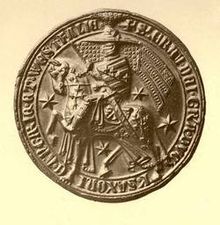
Sophia of Brandenburg-Stendal (1300-1356) was a daughter of Margrave Henry I (1256–1318) and his wife Agnes of Bavaria(1276–1345).
Bernhard III, Prince of Anhalt-Bernburg (died 20 August 1348) was a German prince of the House of Ascania and ruler of the principality of Anhalt-Bernburg.
Albert was the oldest surviving son of the first Brunswick duke Otto the Child and his wife, Matilda of Brandenburg. When his father died in 1252, he took over the rule of the duchy; later his younger brother John joined him.
Margaret of Sicily (also called Margaret of Hohenstaufen or Margaret of Germany) (1 December 1241, in Foggia – 8 August 1270, in Frankfurt-am-Main) was a Princess of Sicily and Germany, and a member of the House of Hohenstaufen. By marriage she was Landgravine of Thuringia and Countess Palatine of Saxony (German: Landgräfin von Thüringen und Pfalzgräfin von Sachsen).
He was the son Prince Nicholas I of Mecklenburg-Werle and his wife Princess Jutta of Anhalt the daughter of Prince Henry I of Anhalt and his wife Princess Irmgard of Thuringia.[1]
.Otto I of Hesse (c. 1272 –17 January 1328) was Landgrave of Hesse from 1308 until his death.
William V, Duke of Jülich ( c. 1299 – 25/26 February 1361) was a German nobleman. Some authors call him William I, because he was the first Duke of Jülich; the earlier Williams had been Count of Jülich. Other authors call the subject of this article "William VI"; they count the son and co-ruler of William IV as William V.
Otto IV, Count of Ravensberg ( c. 1276 – 1328) was a German nobleman. He was the ruling Count of Ravensberg from 1306 until his death.
Margaret of Berg-Windeck ( c. 1275/1280 – between 1339 and 1346) was a German noblewoman.
She was the only daughter of Henry of Berg, Lord of Windeck and his wife Agnes of the Marck.
Irmengard von Öttingen (d. 1399), daughter of Count Ludwig VI of Oettingen.
Peter II (1304 – 15 August 1342) was crowned King of Sicily (then called Trinacria) in 1321 and gained full sovereignty when his father died in 1337.
|
|
|
|
|
|
|
|
|
|



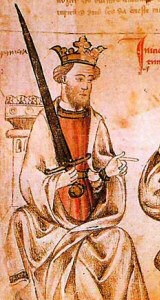









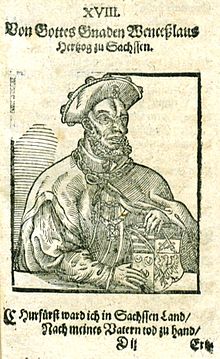















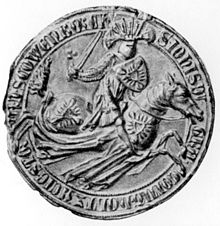

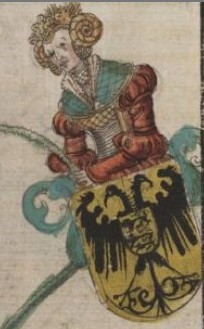

No hay comentarios:
Publicar un comentario